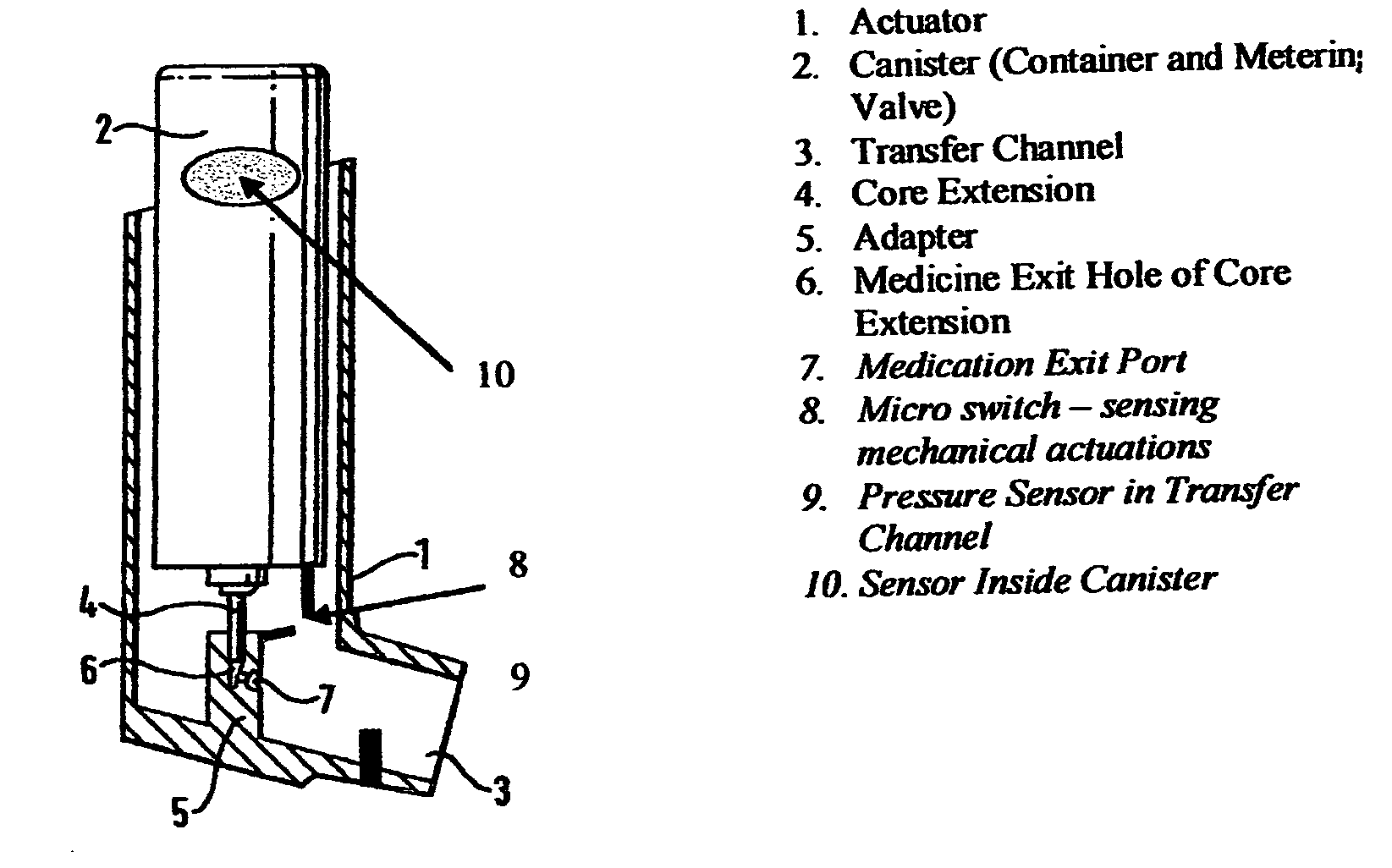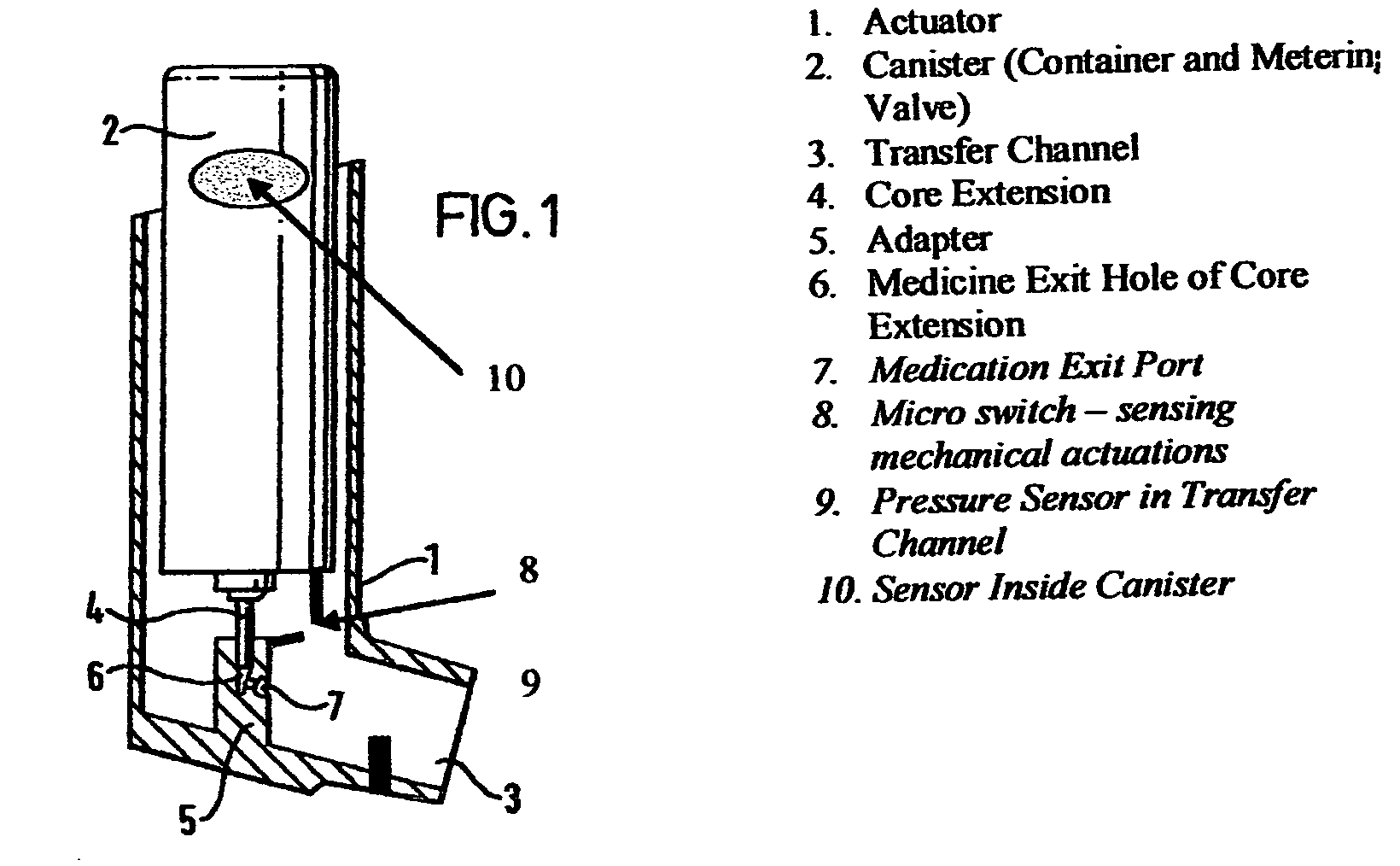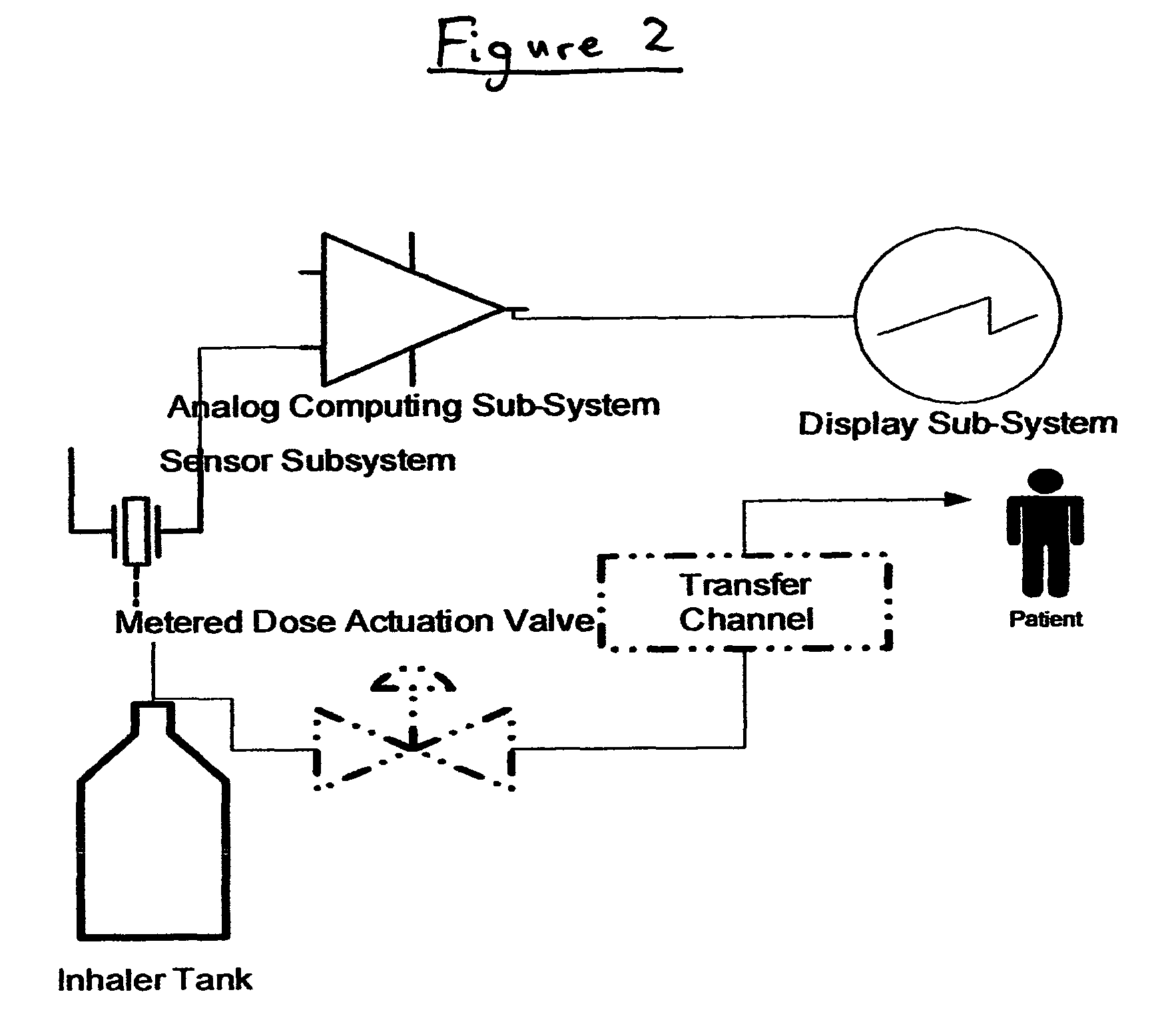Apparatus for dispensing pressurized contents
a technology for distributing apparatuses and contents, applied in lighting and heating apparatuses, combustion types, instruments, etc., can solve the problems of adverse environmental effects, no effective way of monitoring the amount of contents, and limited aerosol devices
- Summary
- Abstract
- Description
- Claims
- Application Information
AI Technical Summary
Benefits of technology
Problems solved by technology
Method used
Image
Examples
example 1
The Electronic Measuring Pressurized Metered Dose Inhaler (MpMDI)
[0074]A MDI as depicted in FIG. 1, callouts 1-7 only, is utilized in this Example. The container is filled to capacity with a therapeutic composition comprising a therapeutic agent (hereinafter referred to as “medication”). The canister is inserted into the actuator. The actuator works traditionally.
[0075]In this embodiment, the container includes a sensor on its interior (see FIG. 2). The sensor is either (A) a Pressure Sensor, constructed of a low-hysteresis material which is capable of slight flexing under applied pressure, and is mounted inside the container so that a slight mechanical flexing of the pressure sensor, caused by a minute change in container internal pressure, creates a variable capacitor, a variable resistor, a variable inductor or an induced material strain which is measurable by a strain gauge or other means of bringing a signal to the exterior of the container which is proportional to the change i...
example 2
The Mechanical / Hydraulic Measuring Pressurized Metered Dose Inhaler (MpMDI)
[0079]A MDI as depicted in FIG. 1, callouts 1-7 only, is utilized in this Example. The container is filled to capacity with a therapeutic composition comprising a therapeutic agent (hereinafter referred to as “medication”). The canister is inserted into the actuator. The actuator works traditionally.
[0080]In this embodiment, the container includes a sensor on its interior. The sensor is either (A) a pressure sensor constructed of a low-hysteresis material which is capable of slight flexing under applied pressure, and is mounted inside the container so that a slight mechanical flexing of the pressure sensor, caused by a minute change in container internal pressure, causes a pressure reservoir, bladder or balloon to compress sending a hydraulic signal to a hydraulic amplifier; or (B) a liquid, gas or liquid gas level sensor that can consist of a buoyant object (float) that is coupled to a linkage that changes a...
example 3
The Electrical Comparing Measuring Pressurized Metered Dose Inhaler (CMpMDI)
[0083]A MDI as depicted in FIG. 1, callouts 1-7 and 8 or 9, or 1-9 is utilized in this Example.
[0084]In this embodiment, the actuator further comprises a medication sensor. The medication pressure sensor is a sensor in the transfer channel, or a micro switch or both. The sensor can sense the presence of medication in the transfer channel or the micro switch can sense the actuation of the metering valve, collectively or singularly called the “medication signals”. Both the pressure sensor and / or micro switch closures are initiated by actuation of the metering valve.
[0085]The actuator includes a means to interface the sensor mounted inside the container and the medication sensor mounted inside the transfer channel or the actuation micro switch or both with the high gain amplifier. The amplifier boosts the value of the pressure sensor and separately the medication signal by approximately 20,000 times or as neede...
PUM
 Login to View More
Login to View More Abstract
Description
Claims
Application Information
 Login to View More
Login to View More - R&D
- Intellectual Property
- Life Sciences
- Materials
- Tech Scout
- Unparalleled Data Quality
- Higher Quality Content
- 60% Fewer Hallucinations
Browse by: Latest US Patents, China's latest patents, Technical Efficacy Thesaurus, Application Domain, Technology Topic, Popular Technical Reports.
© 2025 PatSnap. All rights reserved.Legal|Privacy policy|Modern Slavery Act Transparency Statement|Sitemap|About US| Contact US: help@patsnap.com



